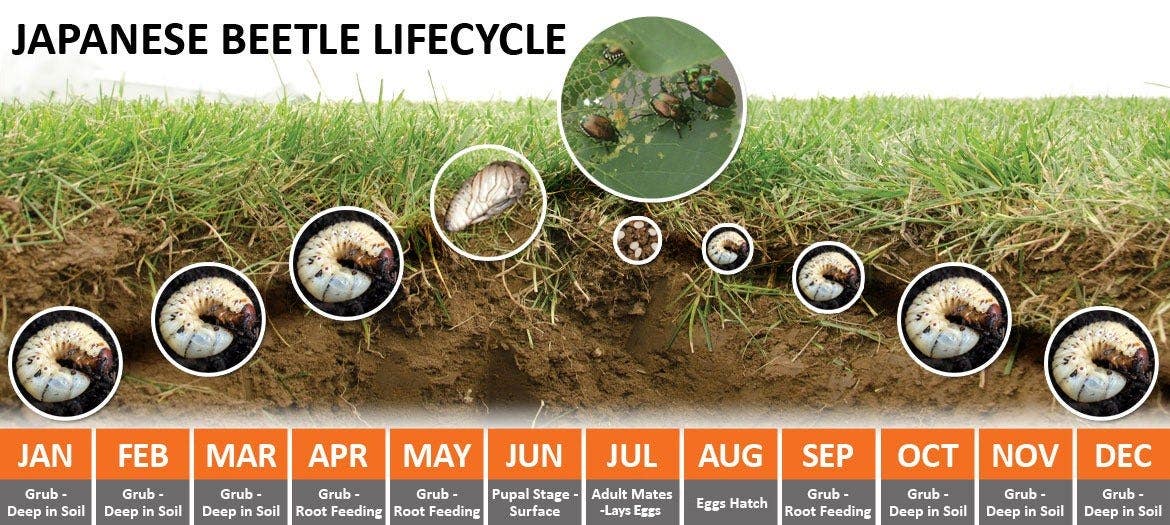How to Control Japanese Beetles
Control & Prevention — How to Get Rid of Japanese Beetles
Japanese beetles are a pest to hundreds of different species of plants, doing damage to both turf and foliage. Grubs live in the soil and feed on the roots of grass and other plants. When adult Japanese beetles begin to emerge, they feed on the leaves and flowers of trees and shrubs, causing considerable damage. It's important to know the lifecycle of Japanese beetles, as the wrong product at the wrong time can be a waste of money and effort.
The Japanese Beetle Lifecycle
Mature beetle grubs become active in the spring. They feed on turf grass roots and can damage lawns. In the summer, adult beetles begin to emerge and feed on garden plants, trees, shrubs, and other foliage. Beetles also mate in the summer and lay eggs. In late summer, the eggs hatch and young grubs feed on grass roots throughout the fall season. As the weather becomes colder, mature grubs go deeper in the soil and become inactive. They will become active again in the spring.


How to Control Grubs
The best time to apply insecticides for grub control is mid-July through the end of September when young grubs are feeding, or in the spring before grubs turn into pupae (an inactive immature form between larvae and adult). Check for lawn infestation by looking for areas of brown turf and any surrounding areas of healthier turf where the grubs could have moved on to.
*When chemicals are used that could harm bees, it is suggested to spray in the evenings when bees are less active searching for food/pollen.
Shop Grub Control Products
How to Control Adult Japanese Beetles
It's easy to spot the damage caused by Japanese beetles. They devour plant foliage, leaving it "skeletonized" with only the leaf veins remaining. The adult beetles' lifecycle is only around 40 days, but in large groups they can do a considerable amount of damage in a short period of time. There are multiple ways to control this lawn and garden pest.
- Remove beetles by hand, especially if numbers are low.
- Use row covers and insect blankets to protect your plants.
- Spray or dust affected plants with an insecticide.
- Please remember that many dusts and sprays are toxic to honeybees. Always check the label and never spray when bees are foraging.
- Also note that pheromone traps can attract more beetles than they catch. If you use a trap, be sure to place it far away from the plants you want to protect.
